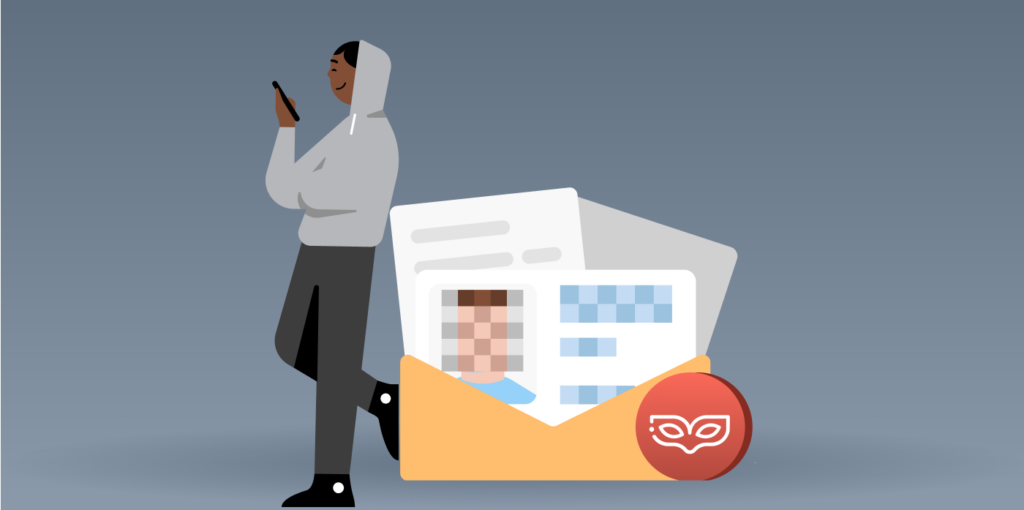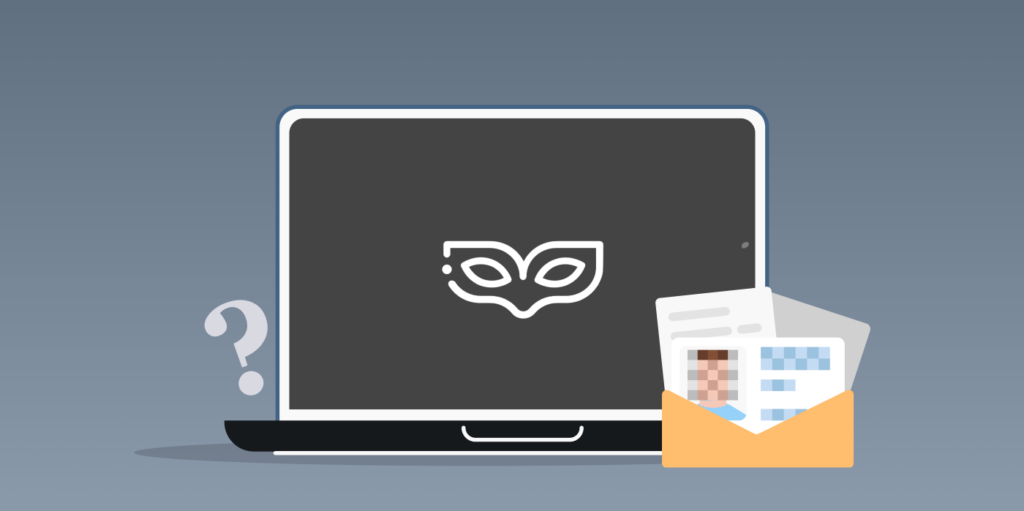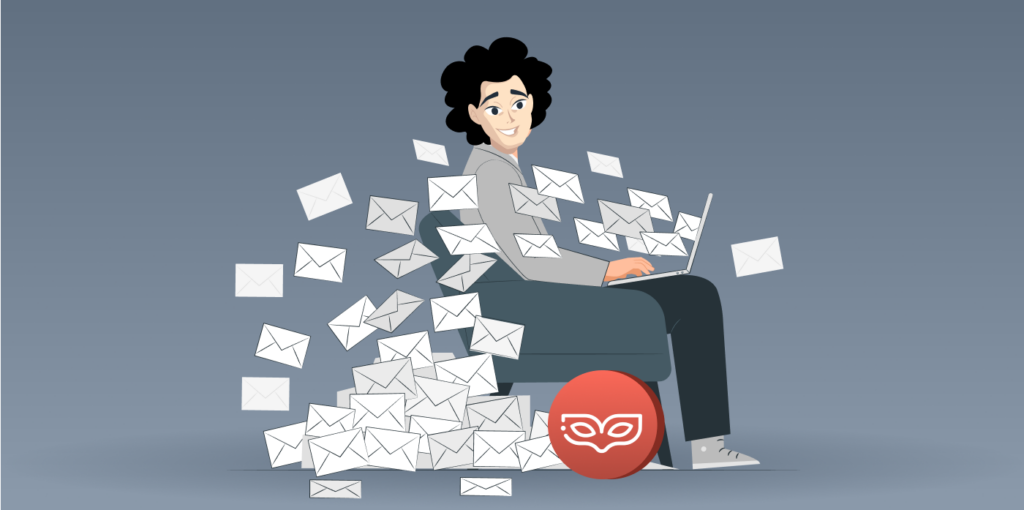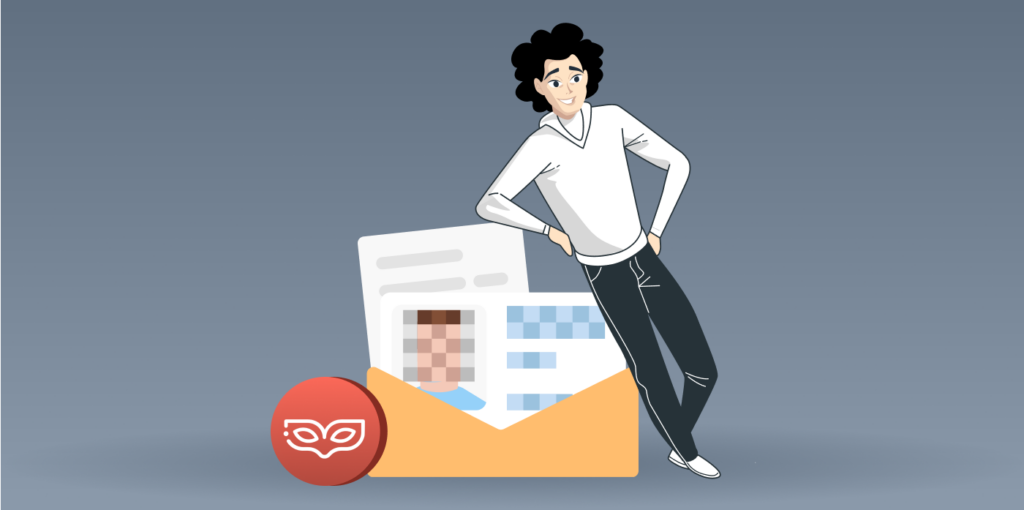People use emails for various reasons. From business communication to personal information, our inbox holds every important aspect of our lives. Therefore, you must protect your identity while sending emails. In the digital world, almost everything you do can leave footprints that are traceable back to you, including your email.

For this reason, understanding how to send an anonymous email is a great way to protect your identity and digital privacy. When you hear about an anonymous email, you may think of it as something mischievous, unethical, or even fraudulent. However, the truth is that sending an anonymous email is not always for a malicious reason. There are legitimate situations where it might be necessary. Read this article to discover these circumstances and learn about the methods on how to send these emails.
What is an Anonymous Email?

An anonymous email is one that does not reveal any personally identifying information (PII) that can be traced back to the sender. A feature that comes in handy to maintain privacy, avoid spam, and protect sensitive information. While anonymous email provides a reasonable level of protection, keep in mind that 100% anonymity is difficult to achieve.
On the other hand, sending a regular email transmits a lot of information, including your IP address. So, when your mail is delivered to the other side, the recipient and your email provider can tell your location and, potentially, your identity.
How Do Anonymous Emails Work?
Anonymous emails work by disrupting the process of revealing details about your identity. For example, they can reroute your true IP address to make it seem like you’re sending the email from a different location.
Also, they can give you a temporary email address that expires after a set time so that the origin can’t be traced. Moreover, anonymous emails use encryption to scramble the content of your message so that only the person with the encryption key can read the emails.
How to Send a Private Email

There are many ways to send an anonymous email, and we’ll examine some of them below. You can combine one or more of these methods to maximize privacy and security as per your convenience.
1. Use a New (Fake) Email
You can create a new account on regular email platforms like Gmail or Yahoo using fictitious information like fake name, date of birth, and home address. However, it’s important to know that these service providers usually collect details like your IP address and can be compelled to reveal them if they are under legal pressure.
Moreover, the recipient of your email might be wary of opening your message if your account appears to be unverified.
If these concerns are deal breakers for you, you can use a secure, anonymous email provider like ProtonMail and Guerilla Mail. These services encrypt your emails, inbox, and contact list while giving you access to the major features of your standard email platforms.
2. Use Burner Emails
Disposable email services provide burner emails that can self-destruct after a specified time or after receiving a certain number of emails. However, you might not be able to enjoy the features of regular email accounts like attachments and contact management.
Furthermore, some burner email services are flagged as spam traps, so your message could be filtered out or blacklisted.
3. Use a Disposable Phone Number
When setting up an email account, you’ll usually need a phone number to get a verification code. To prevent the created email from linking back to you, make use of a burner phone or a disposable phone number.
After receiving the verification code, you can separate your anonymous conversion from your true identity. When purchasing a burner phone, you can further reinforce your privacy by making payments using some anonymous payment services like Paysafecard or Ukash.
4. Hide Your Location with a Tor Browser Or a VPN
Tor is a free software that makes your browsing activity anonymous by passing it through a network of relays. While Tor is a great way to add another layer of privacy to your emails, it usually has a slow connection because of the multi-layered routing process. Also, there is a potential risk that the exit node (the final point) of the Tor network can reveal your internet traffic.
Similarly, a VPN encrypts your internet data and re-routes it through a remote server to hide your original address. As such, any email you send would seem like it’s coming from a different location. When selecting a VPN, make sure to opt for a reliable one like ExtremeVPN with features like strong encryption and a no-logs policy to further reinforce your privacy.
5. Wipe Metadata from the Attached Files
Metadata is hidden information within files that contains details like the author, the creation date, and editing history. When you want to send any anonymous email, ensure you remove this metadata to minimize the possibility of tracing the message to you.
You can do this on Windows using Document Inspector or manually by looking for the option to Remove Properties and Personal Information on your files. Alternatively, online tools and software programs like ImageOptim can help you strip this information from your documents and images before attaching them to your emails.
6. Email Encryption
Even if your message is intercepted, email encryption makes it unreadable to someone who doesn’t have the decryption key. Popular services like ProtonMail and Tutanota provide end-to-end encryption so that only the sender and intended recipient can read the message.
PGP (Pretty Good Privacy) is another strong encryption solution that uses public and private keys to encrypt and decrypt messages. However, it requires technical knowledge to set up and use effectively.
If you still want to enjoy encryption using the standard email clients, you can create a new account (of course, without using your real name) on Gmail and Outlook. Then, you can activate the encryption settings by doing the following:
Use Confidential Mode on Gmail:
- While crafting your email, click on Confidential mode at the bottom right of the page.
- Then tap on Set an expiration date and passcode so that the recipient will need a passcode to open the mail.
Encrypt Emails with S/MIME on Outlook:
- Navigate to File > Options > Trust Center > Trust Center Settings.
- Then go to Email Security > Encrypted Email.
- Finally, click on Settings > Certificates and Algorithms, then tap on S/MIME certificate.
Encrypt Emails with Microsoft 365 on Outlook:
- While crafting your email, click on Options > Encrypt.
- Depending on your preference, tap either Encrypt-Only or Do Not Forward to deactivate forwarding.
Best Practices for Sending Emails Anonymously

Alongside the methods we’ve outlined above, the following are more safety tips you can adopt for additional email privacy.
- Don’t use public wifi networks to send your anonymous emails because they can be unencrypted. As such, it is best to use a secure private network to prevent a third party from intercepting your data.
- Use strong passwords and two-factor authentication for your anonymous communication to prevent unauthorized access to your account.
- Compartmentalize your anonymous emailing sessions from your other online activities to minimize the potential of tracking.
- Keep the content of your message concise and simple. Additionally, make sure it doesn’t contain unnecessary details like your favorite hangout spot that can lead back to you.
- Maintain a respectful and professional tone instead of using bad or offensive language that can jeopardize the credibility of your anonymous message.
- Confirm that your VPN is on before logging into your anonymous account, and do not use your anonymous email to log in to other personal platforms like Facebook.
- Your anonymous email password should be different from that of your other personal account.
Five Reasons to Use an Anonymous Email

As we’ve stated earlier, there are legitimate circumstances that call for the need for a private email. Some of these include:
Whistleblowing
Exposing the wrong activities within an organization could be a very difficult task. This is especially true when the institution is powerful, and nobody is willing to support you. With an anonymous email, whistleblowers can report fraud, misconduct, and other illegal activity without fear of exposure.
Let’s say your superiors violate environmental regulations as an employee of an organization. You can report to the appropriate authorities without the pressure of losing your job or harassment by your boss.
Investigative Journalism
Investigative journalists usually rely on confidential sources to uncover sensitive stories. Anonymous emails are a secure way for these sources to share their information without risking their safety.
This privacy is especially important in countries where there is restricted freedom of the press and investigative journalism is considered a dangerous career.
Seeking Help in Sensitive Situations
Someone might need help, but they can’t disclose their identity because of how sensitive the situation is. Such a person can get support or advice without fear of judgment or other consequences using an untraceable email.
For example, a victim of domestic abuse can use anonymous emails to contact a counselor or an organization. This allows them to begin the process of being free without suffering the immediate risk of more abuse.
The only challenge here, however, is that anonymous emails might not be effective for the back-and-forth communication that ensures comprehensive support.
Reporting Tracking or Spam
Many companies or spammers scrape emails from mailing lists of websites, or discussion boards. After that, they use this list for several marketing campaigns. If you don’t want to get involved in this, you must use an anonymous email.
Also, when you sign in to a platform with your credentials, the website gets access to a lot of your sensitive information. For example, Google and Facebook use this data for targeted ads. However, if you use an anonymous email, these websites can’t track you.
Protecting Privacy
Anonymous email is a way to protect your online privacy in a data-driven world. For example, you can use this mail to sign up for services you don’t want to be linked to your personal email address. With that, you can gain access to a service you need while limiting the amount of personal information you share.
Can Anonymous Emails Be Tracked?
Yes, it can. But that depends on the method that you use to send emails. If you use the untraceable email approaches we’ve explained above, you’ll be able to hide your IP address, metadata, and other personal information that could be traced back to you. Nonetheless, in reality, 100% anonymity is difficult to accomplish.